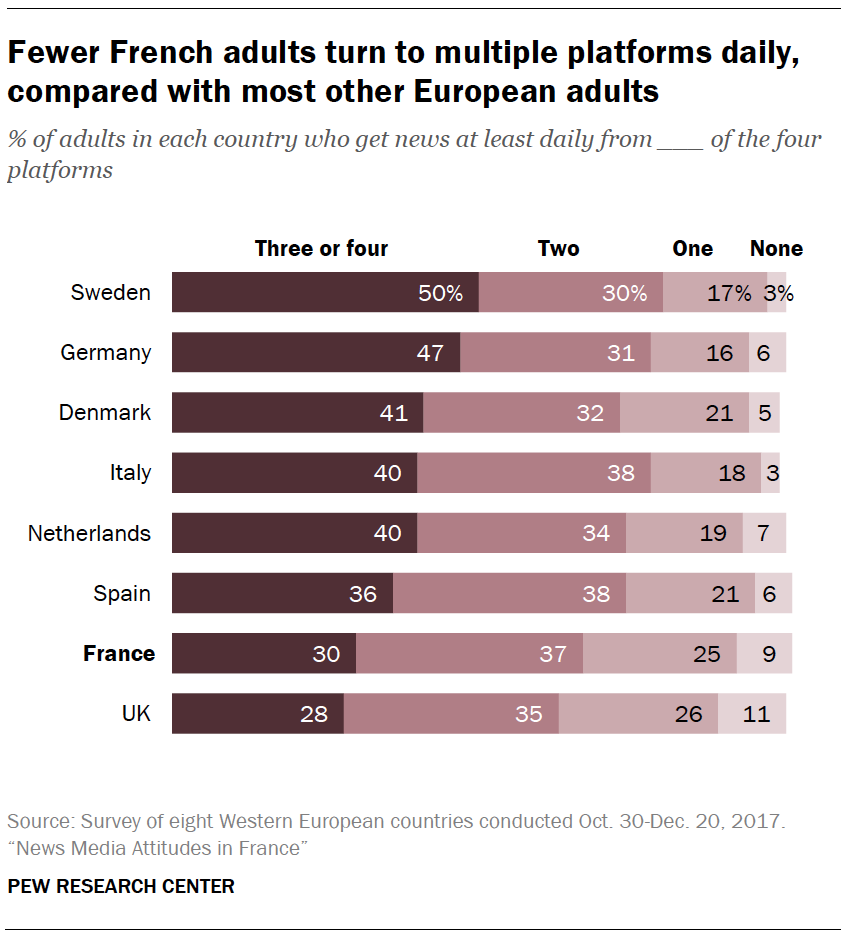Among four platforms asked about – TV, radio, online and print – TV is often the most popular for news: Six-in-ten adults or more in each country studied (including as many as 81%) get news there at least daily.
France similarly has a large portion of adults (71%) who get news daily from TV. Radio is the second most popular news platform used daily (53%). Online news use is comparatively low in France: About half (47%) get news daily from online sources, compared with about six-in-ten or more in most other Western European countries. Print media is the least popular platform, with about a quarter of French adults (23%) reading print news sources daily.

While TV is most popular, many Western Europeans use multiple platforms every day to get news. In the eight countries surveyed, majorities use at least two of the four platforms daily. And in some countries, about half get news this frequently on three or four.

French adults are less likely than adults in most other countries surveyed to regularly use multiple platforms for news. While a majority of French adults get news daily from at least two platforms (67%), three-in-ten regularly use three or four platforms, which is lower than most of the other countries surveyed.
A quarter of French adults get news daily from just one platform. This group of single-platform news consumers is primarily made up of people who get news at least daily from TV (52%), while some use online sources (25%) and the radio (21%) and very few get news only from print sources.
News platforms used by age, education and income
Overall, younger adults in France are more likely to get their news online than from other legacy platforms like TV, newspapers or radio. In contrast, older adults are more likely to get their news through non-digital platforms.

Around six-in-ten of those ages 18 to 29 (63%) get news from online sources every day, compared with 41% of those ages 50 and older. On the other hand, nearly nine-in-ten adults ages 50 and older (86%) get news from TV at least daily, compared with less than half (44%) of those ages 18 to 29.
Older adults are also more likely than younger adults to get news daily from more platforms. About a third of those 50 and older (36%) get news at least daily from three or four platforms, compared with 28% of adults ages 30 to 49 and 16% of adults ages 18 to 29.

Differences also emerge based on education and income. Among those with a secondary education or less, the most common source for news is TV, with 76% getting news there at least daily. In contrast, those with more than a secondary education are about equally likely to get news from TV (58%), the radio (60%) and online sources (59%). Those with a secondary education or less are also more likely than those with high education levels to get news from print sources (26% and 18%, respectively).
When looking at differences by income, French adults with an income at or above the median are about as likely as those with a below-median income to get news daily from TV and print sources. Higher-earning adults, however, are more likely to get news daily from the radio or online sources. As a result, about a third of adults earning a higher income (34%) get news at least daily from three or four platforms, compared with about a quarter of those with an income below the median (26%).




